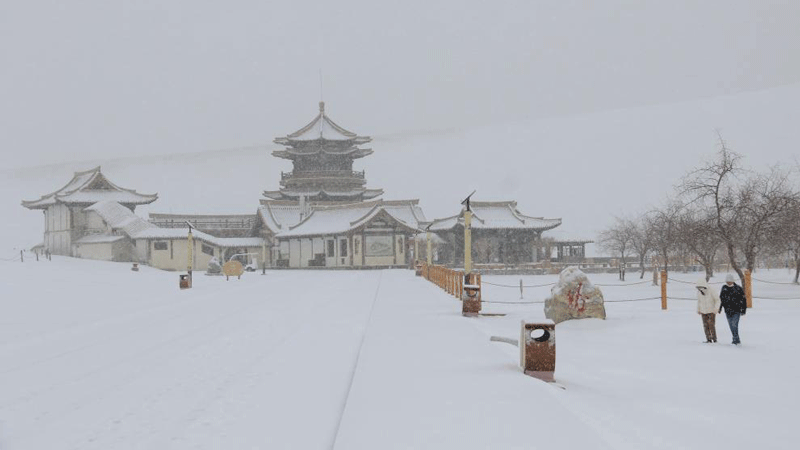Molding the future of an ancient craft
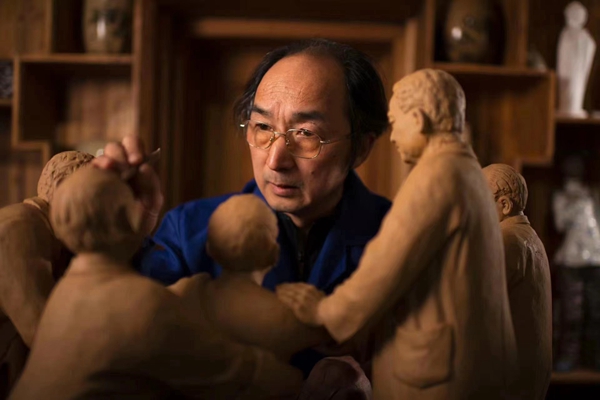
Liu Kunting sculpts clay figurines at his workshop in Changsha, Hunan province.[Photo provided to China Daily]
Craftsman adopts a new approach to ensure that the Tongguan porcelain firing technique prevails, report Yang Feiyue and Zhu Youfang in Changsha.
Not everyone can do much with a ball of clay, but in Liu Kunting's magic hands it can turn into vivid porcelain figurines, pots and other items of artistic value.
In Liu's pottery workshop, which is tucked away in a small alley in Tongguan subdistrict of Changsha, capital of Central China's Hunan province, visitors can see countless exquisite porcelain items depicting a variety of subjects, from carefree village children and demure country lasses to gray-haired farmers.
They are all labors of love for Liu.
Dedicating more than five decades to refining his clay-molding feats, the 59-year-old has become a national inheritor of the Tongguan porcelain firing technique that was named a national intangible heritage by the State Council in 2011.
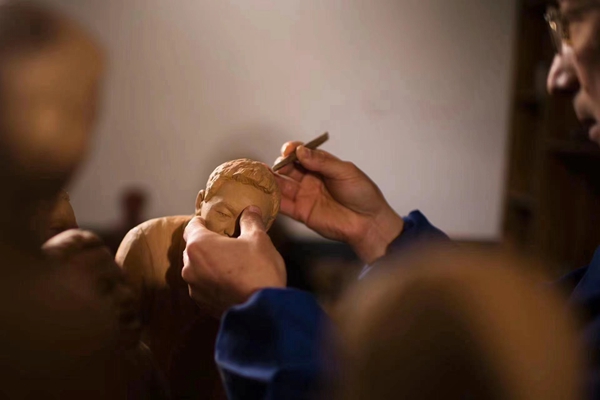
Liu Kunting sculpts clay figurines at his workshop in Changsha, Hunan province.[Photo provided to China Daily]
"Making porcelain using a Tongguan kiln requires at least six kinds of raw materials such as clay, sand and subsoil," Liu says.
"It takes at least 10 days, and more than 10 meticulous and laborious procedures, including clay concoction, molding, pinching, painting and glazing, before a piece can be fired at a maximum temperature of 1,280 C," Liu adds.
At a recent archaeological exhibition that showcased achievements of the past 70 years, a celadon-glazed porcelain bowl from Tongguan stood out among other ancient relics with its inscriptions of an ancient lotus-picking poem.
The bowl dates back to the Tang Dynasty (618-907) and was displayed at the Changsha Museum. The poem on it is not included in the Complete Tang Poems, a massive collection of Tang poetry, just as many of its counterparts were found to be inscribed with lesser-known poems of that era.
The poems faithfully record what life was like in Changsha during the Tang Dynasty, and most of them were authored by kiln workers and other common people, says Zhang Haijun, deputy curator of the museum.
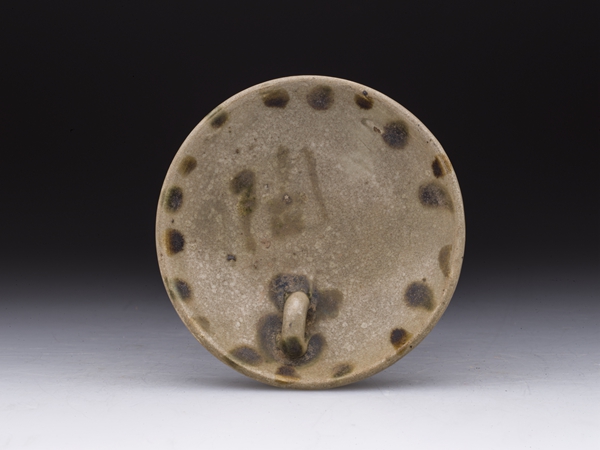
A Tongguan kiln porcelain lamp from the Tang Dynasty (618-907).[Photo provided to China Daily]
That makes Tongguan kiln porcelain valuable for studying society and culture of the Tang period, experts say.
Tongguan was the birthplace of the country's multicolored porcelain and the Tongguan kilns can be regarded as an export-oriented industrial cluster, with its products sent to nearly 30 countries and regions, reaching as far as South Asia and northern Africa, according to Qu Wei, curator of the Museum of Tongguan Kiln Porcelains in Changsha.
Lower prices, unique multicolored underglaze painting and foreign cultural elements integrated into the shapes and decorations made the items produced at the Tongguan kilns a favorite for export during the middle-to-late Tang era, Qu says.
The Tongguan museum preserves more than 160 items of 9th-century porcelain recovered from an Arab boat that left China during the Tang Dynasty, but later sank in Indonesia's Java Sea, referred to as the Batu Hitam shipwreck.
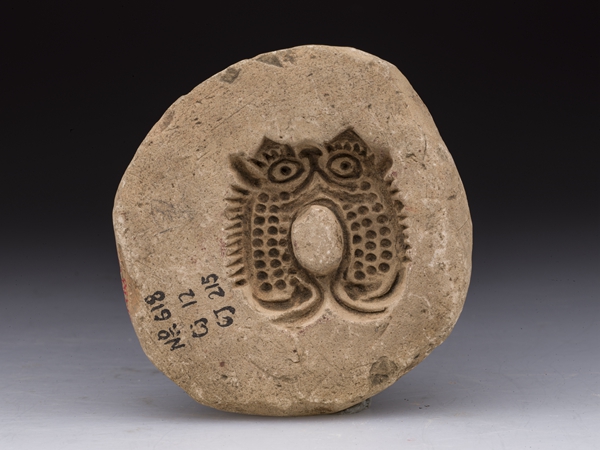
A Tongguan kiln clay mold featuring fish motifs.[Photo provided to China Daily]
In 1998, a German salvage company discovered the shipwreck, one of the earliest found along the ancient Silk Road. More than 67,000 pieces of porcelain were recovered from the wreck, 85 percent of which had been produced at the Tongguan kilns.
However, the output of the Tongguan kilns began to decline after the Tang era, and the kilns were even on the verge of being forgotten after the Song Dynasty (960-1276).
"Because the kilns produced cheap daily items that were mostly used by ordinary people, historical records about them are rare," Qu says.
Tongguan kilns returned to the public consciousness again in the 1950s, thanks to the archaeological discovery of massive relic sites in the region populated by ancient kilns. The archaeological site, which covers 300,000 square meters, has been protected by the province because of its importance since 1983.
Over the years, the local government has sought to revive the region's long tradition of porcelain manufacture and boost the local industry.
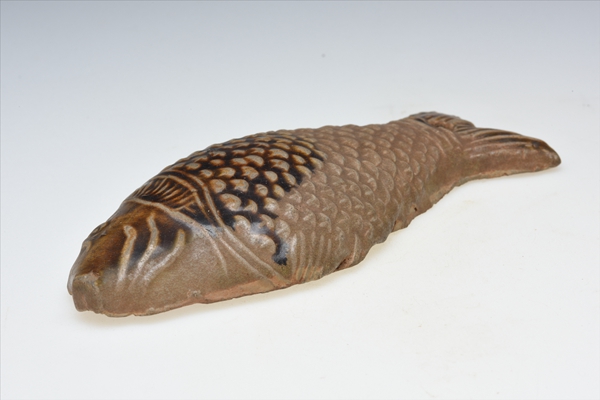
A Tongguan kiln porcelain in the shape of a fish from the Tang Dynasty.[Photo provided to China Daily]
It has made Liu all the more determined to pursue the trade that has been carried forward in his family for three generations.
Liu has been exposed to local porcelain art since he was 4 years old. As a child, he loved fashioning figurines and animals out of clay.
"The porcelain items were everywhere in Tongguan," Liu says.
He started to focus on the porcelain craft with his grandfather, at the age of 15.
"My grandfather asked us (children) to knead the clay and shape it into dozens of eggs every day," he recalls.
"I didn't know what it was for in the beginning, but then I realized it was a practice for molding the heads of figurines."
Liu went on to study molding, design and integration of traditional craftsmanship with modern technology.
From 1981-83, Liu followed modern sculpture master Zhou Qingding to hone his skills in urban garden and animal sculptures, getting it down to a fine art.
He later applied the skills he learned to his porcelain creations, which brought to life characters from well-known literary works, including Journey to the East, a 16th-century Chinese novel by Wu Yuantai.
In 1986, Liu took the lead in designing and producing a porcelain relief featuring an eagle with a pair of wings 1.8 meters wide for the Hunan Hall at the Great Hall of the People.
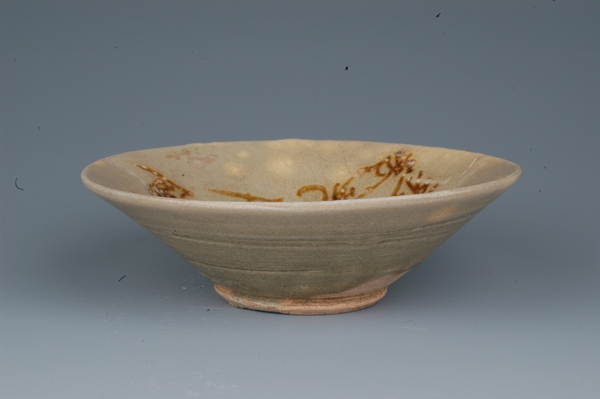
A porcelain bowl featuring a Tang poem.[Photo provided to China Daily]
In 2005, he designed and produced a mural for Changsha's Fanhou Street that reflected the charm of the historical block.
Whenever Liu hears about a new source of clay, he will always drive there to check it out.
"Selecting good clay is a prerequisite for good porcelain, and the different quality unearthed in different places can easily lead to problems in material proportioning," Liu says.
How the items are placed in the kilns also matters.
The temperature inside the kiln varies, and the temperature of the fire at different locations in each kiln is not constant. They can be subject to weather, wind direction and many other factors, all of which require long-term experience in order to make the correct judgment, Liu explains.
However, Liu says no one in the trade can ensure that every piece of work is a success, no matter how experienced the person is, including himself.
"Any slight deviation in any process can ruin all the work," he says.
In recent years, Liu has incorporated many new ideas while inheriting the traditional firing technique of Tongguan kiln ceramics. Through many experiments, Liu reconfigured the clay, so that the teapots are of more consistent texture and able to accommodate more sophisticated artistic carving.
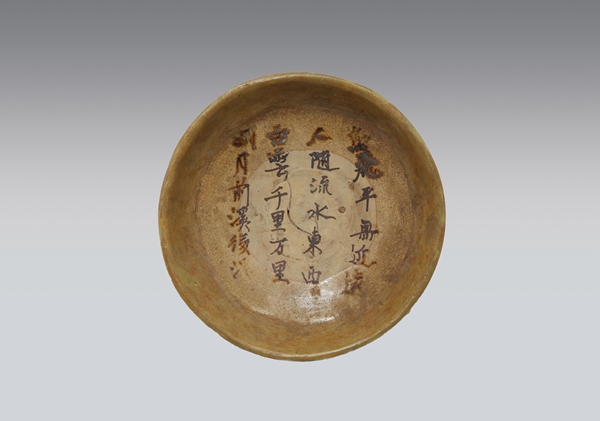
A Tongguan kiln porcelain plate featuring a poem.[Photo provided to China Daily]
To date, Liu has focused his attention on further tapping the ancient art's potential.
"I hope to promote the transformation of Tongguan kiln ceramics from collectors' items to more practical usage," he says.
He has successfully made a batch of ceramic jars for preserving the black tea from Anhua county, Hunan.
"They turned out to be very popular," he says.
Liu has also explored the integration of ceramics with local embroidery and silverware.
The idea is to have Tongguan kiln ceramics mix better into people's lives.
In addition, Liu has committed himself to publicizing the intangible cultural heritage.
He has produced more than 40 porcelain-making videos for his Douyin account, some of which have received more than 1 million views. Many of his 158,000 followers have shown strong interest in visiting Tongguan to appreciate its ancient charm.
Liu has also nurtured hundreds of apprentices, some of whom have followed him for more than two decades and have opened their own porcelain workshops.
Liu has turned his workshop into an internship facility to reach more children and young people.
To date, about 10,000 primary and middle school students have visited his studio to get a handson experience of Tongguan kiln porcelain.
"I hope the craft can find its way onto campuses and into classrooms, so more children will come to love it," Liu says.
Photos
Related Stories
Copyright © 2022 People's Daily Online. All Rights Reserved.








